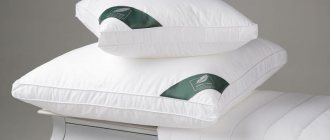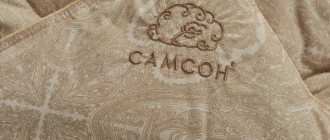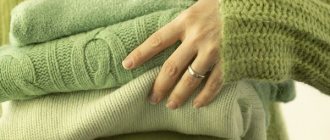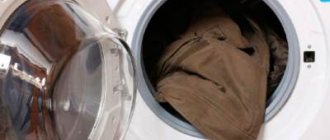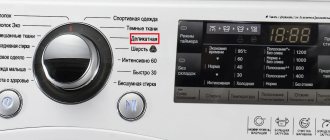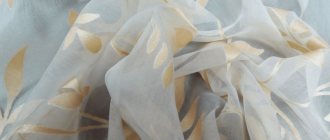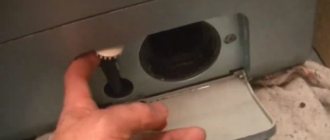Washing a huge mattress is not an easy task. For this reason, to protect it from dirt, there is a special cover - a mattress cover. However, sooner or later the cover itself becomes covered with dirt and you need to decide whether to buy a new one or wash the old one.
Then the question arises: can it be washed at all? How to do this correctly so that it does not spoil? You will learn about this, as well as drying and washing a waterproof mattress cover, methods and nuances in this article.
Is the mattress cover washable?
A mattress cover is a cover that needs to be secured to the mattress using elastic bands. This cover covers the entire mattress, preventing dirt and stains. It is used for cribs and nursing care. It allows you to significantly extend the life of the mattress for any bed.
Since the sheet does not fully protect the mattress cover, sooner or later it begins to become covered with dirt and stains. So it’s not just possible to wash it, but even necessary.
A few basic rules when washing this device:
- washing should be carried out exclusively in a gentle mode, otherwise the cover may be damaged;
- in no case should the temperature be set to high, as excessive heat treatment in boiling water will damage the properties of the mattress cover;
- the cover can be deformed, and therefore when drying it should not be squeezed out, you just need to leave it to dry in its original shape;
- Different mattress cover materials require individual care when washing; below you can familiarize yourself with the washing features of each material.
REFERENCE : Heavy covers can be washed in a washing machine with a load capacity of over 5 kilograms.
Aggressive detergents are strictly prohibited when washing mattress covers. These include various bleaches, stain removers and conditioners.
If the mattress cover is used for a crib, then it is better to use liquid soap when washing so that the baby does not develop allergies. The mattress cover requires regular washing, since with gentle washing, complex stains may remain and it is best not to allow them to reach them.
IMPORTANT! With a waterproof mattress cover with elastic bands, only the lower part is resistant to moisture. The top is made from ordinary natural and synthetic fabrics and is therefore susceptible to moisture absorption.
Before you start washing your mattress pad in the washing machine, you need to understand what material the mattress pad is made of. Further washing and care conditions will be based on this. There are instructions attached to the tag that you will need to carefully study in advance.
You need to focus on the fabric of the cover, for sewing which the following materials are usually used:
- 100% cotton. The temperature should not exceed 40°C. New items often shrink; for this reason, you should not wash 100% cotton in too hot water. In this case, hand and machine wash options, as well as bleaching, are suitable.
- Mixed composition. Cotton and synthetic fibers are used as manufacturing materials. Such products require special care.
- Polyester or other synthetic fiber. In this case, you should not wash the mattress cover often. Water temperatures above 60°C are acceptable. Iron at minimum temperature.
- Microfiber . Can be machine washed at temperatures up to 40 degrees, without drying.
- Fabric with a waterproof membrane. Hand washing in a gentle mode without spinning and drying is acceptable. Washing should be done at temperatures up to 40 degrees. When washing waterproof mattress covers, do not use powder, as it clogs the pores of the material. To do this, it is better to use gels, capsules, and liquid products.
Does your mattress have a mattress protector?
Not really
Models with membrane (waterproof)
Mattress covers made of membrane fabric are good because, due to their special structure, they do not allow liquids to penetrate inside and stain the mattress, while at the same time they remain breathable, which provides special comfort.
When heavily soiled, the pores of the membrane fabric become clogged and it loses its properties, so you need to clean this mattress cover regularly.
Before purchasing a waterproof mattress cover, you need to make sure that using a washing machine is acceptable, otherwise you will have to resort to dry cleaning every time.
If machine washing is not prohibited by the instructions, then it should be done in a delicate cycle, without spinning, at a temperature of 30-40 degrees.
Only use liquid detergents specifically formulated for washing membrane fabrics.
After washing the mattress cover, you need to get rid of excess water; to do this, you can hang it over the bathtub, after which the product is dried by first straightening it.
When the fabric is completely dry, it should be treated with a special impregnation to restore its water-repellent properties.
Prohibited when washing waterproof mattress covers
Membrane fabric requires special care; if washing conditions are not followed, it will completely lose its qualities, therefore, when washing waterproof mattress covers, the following is prohibited:
- use powder detergents that clog the pores of the membrane;
- wash at temperatures above 40 degrees;
- bleach with products containing chlorine;
- wring out in a washing machine, manual wringing is allowed without twisting the fabric;
- dry in the sun and near heating devices;
- iron;
- use stain removers, rinses and conditioners.
Getting rid of stains and dirt before the main wash
Before starting the main wash of the mattress cover, it is necessary to get rid of heavy dirt stains. First of all, it is important to understand where the stain came from and what its origin is.
The dark brown color hints at a trace of blood, and the yellow-brown stains are most likely left from urine, coffee or tea. The appearance of sticky traces is explained by chewing gum or adhesive tape left behind, and bright colored spots are traces of a felt-tip pen or cosmetics. Each stain requires special care.
Blood
Blood stains are most easily washed off when fresh, so if blood gets on your mattress cover, you need to act immediately. The most suitable detergent for washing is laundry soap under cold water. Dried blood stains can be removed using one of the following methods:
- rub 30 grams of laundry soap into about a quarter of a glass, the resulting composition should be rubbed with a brush to remove any dirt, then after thirty minutes it should be wiped off with a damp cloth;
- fill a glass with three tablespoons of salt or soda, apply the resulting mixture to the stain and wipe with a damp cloth after half an hour;
- treat the stain with hydrogen peroxide and remove the foam with a cloth until the stain is completely removed.
Urine
If the stain is fresh, it can be cleaned well with cold water; dried stains can be removed using one of the following methods:
- the stain needs to be poured with liquid soap, it is better if it is transparent, then just wipe with a damp cloth
- a glass one-fourth filled with lemon juice should be added with a tablespoon of salt and the resulting mixture should be applied to the stain, after two hours, wipe with a damp sponge;
- pour 9% vinegar over the stain and wipe with a rag;
- mix household solution. soap and baby powder and pour the resulting stain over the stain.
How to clean a sofa and remove the smell of baby urine at home, read here, how to remove the smell of dog urine from a carpet - here, cat urine - here.
Cosmetics
Cosmetics and marker marks can be removed with acetone or alcohol. To do this, you need to wet a cotton swab with any of the suggested liquids and place it against the stain. In this way, you need to treat the stain several times until small particles of fabric fibers begin to come off. After this, you will need to thoroughly wipe the stain with a cloth.
Wax
Wax stains must first be scraped off with the blunt side of a knife, and then ironed through a paper napkin to remove any remaining dirt.
Fat
Fat is removed using talc, starch and salt. You need to apply them for half an hour or use a cotton pad, after moistening it with alcohol or acetone. Dish detergent will also work in this case.
This article presents a rating of the best means for removing grease in the kitchen, and this article presents a rating of the best means for cleaning the oven from grease and carbon deposits.
Sticky
Sticky marks can be removed using ice, which must be placed in a bag and applied to the sticky spot. As a result, the frozen stain can be scraped off.
Red wine
Red wine stains disappear after a thirty-minute treatment with a salt or soda solution, and tea, coffee and juice stains can be removed with table vinegar.
Other stains
In cases where the origin of the stains is unknown, a steam cleaner will help. It can instantly dissolve any stains. Most stains can be removed with lemon juice and salt or soda.
IMPORTANT! Not all products are suitable for washing mattress covers, as they can damage them. If you are not 100% confident in the product, then it is better to test it on an inconspicuous small area of the cover, and then proceed with a thorough wash.
After removing all heavy soiling, you can begin washing the mattress cover itself.
REFERENCE : you need to determine what fabric and what filling the mattress cover is made of, because washing conditions are different for different types of fabrics.
Also find out how to clean a mattress from stains at home.
Have you ever had to remove stains from a mattress cover?
Of course not yet
Removing difficult stains
Before removing difficult stains on any types of mattress covers, you should carefully study the composition of the material and the rules for caring for it indicated on the product label. If there is no such data, you should adhere to the basic rules for caring for fabric and filler of a certain type.
Important! It is best to remove stains while they are still fresh. Old stains are much more difficult to deal with. Stains should be treated before the main wash.
The method for removing stains depends on their type:
- Blood. Fresh blood stains on the mattress cover should be immediately washed with water and laundry soap. If the stains are old, then it is better to use hydrogen peroxide to remove them. However, there is no need to scrub the stain. You need to apply a little hydrogen peroxide to it using a cotton pad, wait, change the pad and repeat the procedure until the stain is completely gone. After removing the stain, the mattress cover must be washed immediately.
- Urine. Children's mattress covers often suffer from urine stains. Fresh dirt should be immediately sprinkled with salt, then wiped with lemon juice or vinegar. If the stains are old, you should moisten them with water with some vinegar added, and then rub them with laundry soap. If the mattress cover is made of cotton fabric and does not have a moisture-repellent effect, you can use a stain remover to remove stains.
- Wine. To remove traces of spilled wine, it is recommended to use baking soda or salt. A paste is prepared from them, which is applied to the dirt.
- Fat. To remove grease stains, it is best to use dishwashing detergent.
- Juice, coffee, tea, fruit. Such stains can be easily removed with ordinary table vinegar.
The use of special stain removers to remove stains is permitted only for certain types of material, so you should first carefully study the product label.
How to wash different types of mattress covers?
Before you start washing at home, it is important to determine the degree of hardness, since this also matters when determining the conditions for washing.
Soft
Soft mattress covers are machine washable. The materials used for such mattress covers, bamboo fibers and cotton wool, can easily withstand this type of washing. They can also withstand light spinning.
Covers made of bamboo fibers can withstand washing at temperatures up to 40 degrees with minimal spin. In this case, it is strictly prohibited to use aggressive means.
Important! Cotton products are more whimsical. After washing, the covers require thorough drying, during which they need to be turned over and shaken from time to time. If you don’t dry such a mattress cover enough, mold can form on it and subsequently create an unpleasant odor.
Medium hardness
Mattress covers in this category can only withstand hand washing or dry cleaning. When using a washing machine, in almost one hundred percent of cases the cover becomes deformed and loses its properties.
Products of medium hardness are sensitive to the ingress of moisture, which means it must be minimized, dry cleaning with a vacuum cleaner and brush should be carried out more often, and washing should be replaced by wiping with a damp towel.
Hard
Hard mattress covers can only be dry cleaned. They are difficult to wash and dry too. And excess moisture will completely ruin the filler.
Covers designed for an orthopedic effect require delicate washing; they should not be wrung out or twisted, as they are most susceptible to deformation.
And spinning can damage the inner layers. To add freshness, it is best to dry clean with a vacuum cleaner or soft brush.
Mattress cover with synthetic filler
Mattress covers filled with holofiber, polyester fibers and other similar materials tolerate machine washing well.
They are not afraid of high temperatures, spinning and potent agents.
When choosing washing conditions for such mattress covers, you should proceed from the type of fabric used for the outer layer of the product.
Advice! It is better to choose a stitched mattress cover, since the filling in it will not bunch up in one direction.
Ways to wash a mattress cover
If your mattress does not have a protective cover, it will become stained and dirty over time. Washing a mattress at home is an almost impossible task, whether it’s the mattress pad or not. You can wash the cover as stains and dirt appear.
In the washing machine
The recommendations on the label will help you determine the appropriate temperature for washing the mattress cover, after which you need to set the mode based on the material. First you need to get rid of difficult stains. In most cases, a delicate wash cycle with a light spin at medium speed is recommended.
When washing, it is strictly forbidden to use classic powders and aggressive agents. Only gels and capsules are allowed to be used. The rinse aid can be changed to 9% vinegar by pouring 1/3 cup into the compartment where the conditioner is poured.
Processing in an automatic machine is permitted for items made of durable and dense fabrics, such as cotton or microfiber.
Step-by-step instructions for washing in a washing machine are as follows:
- the machine is set to delicate mode with water temperature from 30 to 40 °C;
- spinning is turned off completely;
- liquid gel, soap or shampoo is poured into the powder tray; it is prohibited to use powder;
- The cover is carefully placed in the drum of the machine and the wash is started.
When washing the mattress cover, the spin cycle is completely disabled.
The mattress cover is washed separately from linen and other things; nothing except the cover itself should be present in the drum. If you fill the drum to the limit, you simply won’t be able to rinse the item, and the load on your household appliances will also increase.
Advice! You should first make sure that more than 5 kg of laundry can be loaded into the machine. Small units with low power are not suitable for processing bulky items.
What mode should I wash on?
When washing in a washing machine, it is best to use a delicate or gentle wash cycle, which is applied to sensitive items. Even if the mattress cover is made of dense and durable material, intensive washing can cause it to deform or cause any damage.
Hands
When washing a wool or down mattress cover, it is best to choose the manual option. The machine can damage sensitive products and reduce its properties.
- It is necessary to fill a large container with water at a temperature no higher than 30 °C;
- add a mild detergent, it can be liquid soap, shampoo or gel; powder is strictly prohibited;
- Immerse the mattress pad in water and leave it to soak for twenty minutes.
A large cover is completely inconvenient to wash in a basin; as a rule, a bathtub is used to wash it, which is first half filled with water.
At the end of the soaking process, the product is carefully washed with smooth whipping movements. There is no need to rub and squeeze it, especially since this is quite difficult to do. After a few minutes, you can begin rinsing, which must be done at least three times to completely remove any remaining detergent.
The washed mattress cover must not be wrung out or twisted. It must be left on the grate above the bathtub and wait until all the water has drained.
If the tag immediately indicates that the mattress cover can only withstand hand washing, then you need to go through the algorithm described above, that is, prepare a bath with water at a temperature not exceeding 40 degrees (30 is optimal), then dissolve the detergent.
HELP : For some types of fabrics you can use bleach, but it is better to do without it.
Washing by hand is also necessary in cases where the mattress cover is too bulky and the washing machine simply cannot withstand such a load. Large mattress covers weighing 7 kilograms cannot be washed in a machine.
In addition to the classic hand wash option, there is also dry cleaning using salt or soda, for this you need the following:
- Cover the stain completely with dry salt or baking soda. Leave for 30-40 minutes.
- Thoroughly clean the dirty area with a stiff brush, without pressing hard, so as not to tear or deform the fabric.
- Vacuum the product well.
This method is great for getting rid of fresh stains. Dried stains require the use of professional products.
Mattress covers Ormatek, Askona, Ikea, Vegas
The care of mattress covers will also depend on the manufacturer. Ikea and Vegas products have a wide range of models. Each product contains detailed instructions with care rules.
Askona mattress covers are made from cotton fabrics for the cover, as well as various types of fillings. It is important to follow the washing rules to avoid deformation of the product. They need to be dried in a horizontal position. At the same time, Protect a bed from Askona, which is distinguished by its moisture-resistant properties, must be washed based on the rules of other membrane products. If washing rules are followed, such mattress covers can withstand up to 200 cycles.
Ormatek mattress covers are made from jacquard satin, so to care for them you need to use a delicate mode and a temperature of no higher than 30 degrees. In this case, you do not need to use a spin cycle, and you do not need to dry the mattress cover by machine. In addition, the use of bleaches and stain removers is prohibited.
Cleaning different materials
Covers made from different materials have their own characteristics in care.
Wool
Wool covers require regular care, but frequent washing will only damage such material.
They can be washed by hand or in an automatic machine in the delicate “wool” / “hand wash” mode. The cover cannot be wrung out or dried in a washing machine. Use only soft products specialized for this material. The composition should include lanolin.
The mattress cover should also not be twisted. Just put it in the bathtub to completely drain the water. Next, the cover is dried unfolded on a horizontal surface.
Latex
Latex covers cannot be washed. Washing promotes deformation and will cause the mattress cover to lose its properties. It will simply cease to be usable. Dry cleaning only is appropriate.
Polyester fibers
This material is used for insulation purposes in clothing and linen. It can be found in blankets, pillows and mattress covers. They tolerate washing and spinning well in different modes.
Important! This material can only be washed using liquid gel, which can be easily washed, which cannot be said about standard powders.
Downfeathers
The cover with feather filling can withstand washing in a machine, if this is provided for by its loading standards. You won’t be able to wash a large mattress cover in a washing machine if it can withstand less than 5-7 kilograms of load. Even if the case can be placed in the drum, you should not expect a high-quality result.
It is recommended to wash on a delicate cycle at medium speed, with a maximum number of rinses. All standard cleaning agents should not be used. Use only capsules or gels.
The feather mattress cover can be rinsed in water with the addition of white vinegar at the rate of 1/3 cup of 9% vinegar per 10 liters of water.
Cotton fiber
Hot washing may cause shrinkage. For this reason, the water temperature should not exceed 40 degrees. If the cover is crumpled, then it needs to be laid out to dry with neat and careful movements and ironed with a warm iron. Specialized products are used to wash this type of fabric.
Bamboo fiber
Washing in an automatic machine at a temperature of less than 40 degrees is allowed. It is prohibited to use aggressive detergents. Spin at minimum speed. Ironing is prohibited.
Coconut fiber
Coconut coir filling cannot be washed either in a machine or by hand. In this case, only dry cleaning of the top layer of fabric is applicable. If you expose this material to washing, it almost immediately loses its properties.
Antibacterial
Products with antibacterial properties should be washed according to the recommendations on the tag. As a rule, the impregnation itself can withstand up to hundreds of washing cycles in any way without losing its properties.
First we study the shortcut
Good old-fashioned tags are sewn on for a reason. The set of icons on them is the result of long and painstaking work, inspections, testing on the part of the manufacturer. As a rule, all the necessary care information is reflected on the label: whether it can be washed, how to wash it, etc.
If for some reason the tag is no longer there (you cut it off and threw it away upon purchase, for example), try to find the packaging for the mattress cover, where the main information is often printed, or some booklet that may have come with the mattress and has been preserved.
The frequency of washing is a purely individual phenomenon. It all depends on who sleeps on the mattress, how they sleep, etc. For example, if there is no sheet or bedspread on top, whatever, of course, you need to wash the mattress cover more often, because the human body contains particles of various contaminants. In this case, the mattress cover should be washed together with the bed linen. It is also often necessary to wash products on which people who sweat excessively sleep. In other cases, you can wash the mattress cover once a quarter or even once every six months, or in the case of isolated serious stains.
How to dry?
If you skip the spinning process or if it is not in the washing machine, then the moisture remains on the cover. The drying process must be handled with full responsibility, otherwise the mattress cover will lock and become deformed. To do this, you need to unfold it to the required shape and place it in a horizontal position on a flat surface.
In order for the product to dry efficiently, you need to ensure good air circulation. It is also worth considering that in a closed room, moisture will be retained inside and the mattress cover will not dry properly.
The best measures are preventative. If the cover does not get dirty, it will not need frequent washing. Bed linen laid on top of the mattress cover will help with this; it will protect the cover from major contaminants, which include dust.
Advice! Preventative cleaning will not be superfluous, but you should not abuse it. It is better not to allow yourself to eat or drink in bed to reduce the risk of stains.
The manufacturer of each product leaves recommendations for caring for the product. As a rule, a sufficient measure would be to simply air the mattress cover at least several times a year, vacuum it more often and remove light dirt.
How to remove stains and heavy dirt?
To eliminate unpleasant odors and heavy dirt, the product can be soaked by adding soda and salt to cool water. It is convenient to use a bathtub for this purpose, filling it with water to completely submerge the mattress pad. Soda and salt are dissolved in advance in a small amount of water in a proportion of ½ or 1 tablespoon per 1 liter. It is prohibited to soak covers with membrane fabric in this way.
Don’t forget to periodically remove the mattress cover, take it out into the air for ventilation, and vacuum it. Hanging out in the cold will help get rid of pathogenic microorganisms and dust mites. It is recommended to have the product professionally cleaned or washed at least once every six months. To prevent deformation of the cover after washing, it is recommended to dry it flat on a horizontal surface.
Do I need to wash my new mattress cover?
Immediately after purchase, a new mattress cover should be washed; this rule also applies to other things and items of linen. Even if the product had not been used before, however, while in a warehouse or store, it collected dust, dirt and various bacteria.
Since the mattress cover is used in the most delicate place of the apartment on a regular basis, it is better to take care of its cleanliness.
Mattress cover with coconut filling
If you wash a mattress cover with natural filling, all the properties of the latter will be irretrievably lost, so washing such products is contraindicated.
You can wash only the outer fabric cover of the mattress cover or resort to dry and wet cleaning. A good option would be to entrust the cleaning of the product to professionals by taking it to a dry cleaner.
How to wash a waterproof mattress cover?
A mattress cover that does not allow moisture to pass through also needs to be cleaned - especially considering that it is usually used to care for sick people or small children. Not the entire product has water-repellent properties, but only the bottom layer, which is a polyurethane membrane.
Washing this mattress cover is quite simple. This can be done either in a car or manually according to the following rules:
- the water temperature should not exceed 40 °C;
- do not use aggressive detergents, powders, bleaches and conditioners;
- washing takes place without spinning. When choosing machine washing, automatic mode is also not recommended.
Waterproof mattress covers get dirty on the top and inside, so they need to be washed.
If the waterproof cover is very dirty, then you need to wash the mattress cover to remove yellow stains before machine washing.
The waterproof cover should be washed in the washing machine with care and at low temperatures. Washing rules depend on the material of the product and the type of padding; some mattress covers can even withstand intensive processing, while others can be washed exclusively by hand.
Preparation
If the mattress cover has not been cleaned for a long time, it will not hurt to vacuum it before washing. It is convenient to do this without removing it from the mattress so that it keeps its shape and does not wrinkle under the brush. Placing the mattress on the floor will make vacuuming much easier. The vacuum cleaner removes cobwebs, dust and mites living in the fabric. This will allow the washing powder to concentrate its energy on the main soil during washing.
Preparing for washing
After vacuuming, the cover is carefully removed from the mattress. Before you start washing, be sure to read the manufacturer's label, which indicates the main operating modes. For some products, manual or automatic mode with all the necessary parameters is indicated.
Tip: If there is a sign on the mattress that says no to machine washing, the mattress should only be washed by hand, otherwise there is a chance that it could be irreparably damaged.
How often should I wash?
Each material has its own washing frequency, and it also depends on external factors. If the mattress cover is covered with a sheet, and the owner does not allow himself to eat in bed or drink various drinks, then cleaning can be done no more often than once every three to five months. Sometimes you can simply vacuum or lightly brush with a dry brush to get rid of the dust.
If you sweat excessively, you should wash your mattress cover once a month or even more often. If we talk about waterproof covers for the care of children and seriously ill people, then washing in this case should be done twice a month or more often, if heavy contamination appears.
Pollution Prevention Tips
A properly selected mattress protector will help prevent your mattress from getting dirty. It is always necessary to select a case individually for each case. For children, it is better to take waterproof products, as it will be able to protect the bed from urine, vomit and spilled sugary drinks.
In order for bed linen to last longer, it is necessary to regularly change, wash and air it. If used for a long time without cleaning, dust mites may grow in the fabric, improper drying or damp covers may be subject to the formation of fungi or mold.
Author:
Anastasia Kukushkina
I hope you enjoy the article I have prepared for you! If you find errors in it, write to me about it! I will answer any questions you have, ask them!
